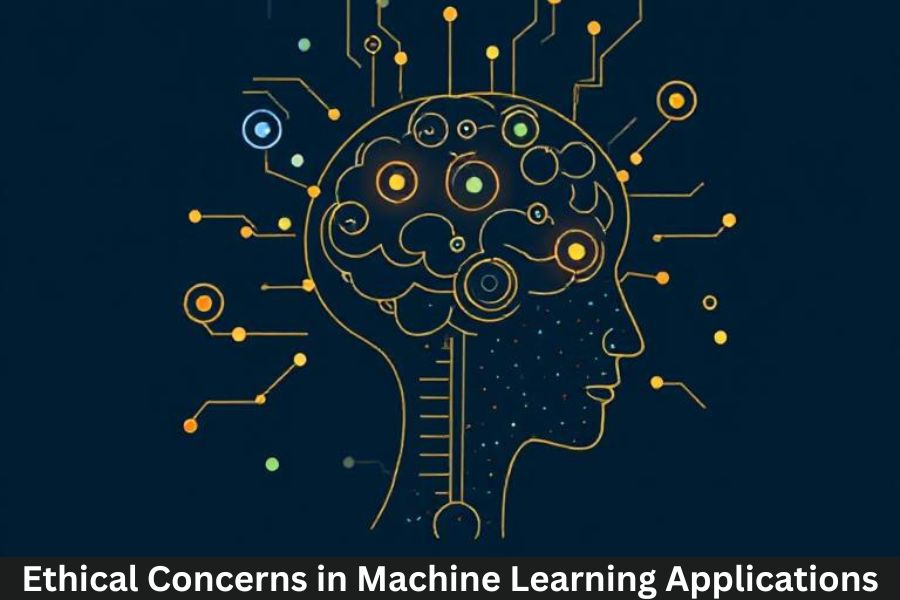Machine learning (ML) is transforming how we live, work, and interact with the world. From healthcare diagnostics to personalized recommendations, it’s embedded in nearly every part of our daily lives.
But with great power comes great responsibility. As ML systems become more advanced, they raise serious ethical concerns—bias, privacy breaches, lack of transparency, and accountability being at the forefront.
So how do we ensure that algorithms serve humanity fairly and responsibly? Let’s dive deep into the key ethical challenges surrounding machine learning and explore how we can tackle them effectively.
1. Understanding Machine Learning and Its Reach
Before we talk about ethics, it’s essential to understand what machine learning actually is.
In simple terms, ML is a subset of artificial intelligence (AI) that enables computers to learn patterns from data and make predictions without being explicitly programmed.
Applications range from:
- Fraud detection in banking
- Disease prediction in healthcare
- Recommendation engines on Netflix or Spotify
- Self-driving cars
- Facial recognition and surveillance
While these innovations bring convenience and progress, they also come with unintended moral and social implications.
2. Why Ethics Matter in Machine Learning
Machine learning doesn’t operate in a vacuum—it learns from data created by humans. If the data is biased or incomplete, the outcomes will be too. Ethical issues arise when algorithms make decisions that impact real lives—hiring, sentencing, insurance pricing, or credit approval.
The goal of ethical ML is to ensure systems are:
- Fair (unbiased outcomes)
- Transparent (decisions explainable to humans)
- Accountable (someone responsible for errors)
- Privacy-respecting (protecting sensitive data)
Without ethical oversight, ML can reinforce discrimination and erode trust in technology.
3. The Core Ethical Concerns in Machine Learning
3.1. Algorithmic Bias and Discrimination
One of the most pressing ethical challenges in ML is bias.
When algorithms are trained on biased datasets, they replicate and amplify those biases.
For example:
- Facial recognition systems have shown higher error rates for women and people of color.
- Hiring algorithms have been found to favor male candidates due to historical data trends.
Bias in ML doesn’t just reflect society’s flaws—it magnifies them, often invisibly.
3.2. Lack of Transparency (The Black Box Problem)
Many ML models, especially deep learning systems, operate as “black boxes.” They make predictions or decisions, but nobody fully understands how or why.
This lack of explainability poses major challenges, particularly in high-stakes fields like medicine or law enforcement.
How can you trust or challenge an algorithm’s decision if you can’t see how it was made?
3.3. Data Privacy and Consent
Machine learning thrives on data—personal data, behavioral data, medical records, and more.
The problem? Much of this data is collected without explicit consent or stored insecurely.
Incidents like the Cambridge Analytica scandal highlighted how data misuse can manipulate public opinion and invade personal privacy.
Ethical ML requires strong safeguards around data collection, anonymization, and usage.
3.4. Accountability and Liability
When an algorithm makes a mistake—say, a self-driving car causes an accident—who is responsible?
The developer? The data provider? The company deploying the system?
Current legal frameworks often fail to define accountability for AI-driven decisions, creating a moral and legal gray area that must be addressed.
3.5. Job Displacement and Economic Inequality
Automation powered by ML is rapidly replacing human labor in many sectors.
While it boosts productivity, it also risks widening income inequality and displacing millions of workers.
Ethically, businesses and governments must balance efficiency with economic justice by reskilling and protecting affected workers.
3.6. Security and Adversarial Attacks
ML models can be vulnerable to adversarial manipulation—tiny data changes that cause massive prediction errors.
For example, changing a few pixels in an image might make a model misclassify a “stop sign” as a “yield sign.”
Such vulnerabilities raise ethical concerns about trust, safety, and accountability.
4. Real-World Examples of Ethical Failures in ML
4.1. Amazon’s Hiring Algorithm
Amazon developed an ML-based hiring tool to automate resume screening. However, it was discovered to be biased against women because it was trained on data from male-dominated tech hires. The project was eventually scrapped.
4.2. COMPAS Recidivism Algorithm
In the US, the COMPAS algorithm used to predict criminal recidivism showed racial bias, inaccurately labeling African American defendants as “high risk” more often than white defendants.
4.3. Facebook’s Content Moderation
Automated moderation tools have mistakenly censored minority voices and failed to filter harmful misinformation—showing how AI governance gaps can harm users globally.
5. The Role of Data in Ethical Challenges
Since ML models are only as good as their data, data ethics plays a crucial role.
Ethical issues often arise when:
- Data lacks diversity or inclusivity
- Historical prejudices are embedded in datasets
- Users’ consent is unclear
- Data security is compromised
Ethical data practices require transparency, informed consent, and diverse representation.
6. Explainable AI (XAI): Making Algorithms Understandable
Explainable AI is a growing movement to make ML decisions interpretable.
Through visualization and transparency tools, developers can trace how models reach conclusions.
This not only improves trust but also allows users to challenge unfair outcomes.
7. Ensuring Fairness in Machine Learning
Fairness in ML means that outcomes should not systematically disadvantage any group.
To achieve this, developers use:
- Bias detection tools (e.g., IBM AI Fairness 360)
- Balanced datasets
- Regular audits and fairness metrics
True fairness goes beyond code—it requires ethical intent and continuous oversight.
8. Regulations and Ethical Frameworks
Governments and organizations are developing ethical guidelines for AI:
- EU’s AI Act (2025) focuses on transparency, accountability, and risk management.
- OECD AI Principles promote human-centered, trustworthy AI.
- IEEE’s Ethically Aligned Design encourages developers to prioritize human rights and well-being.
Such frameworks aim to build public trust and ensure responsible innovation.
9. The Importance of Human Oversight
AI should assist—not replace—human judgment.
Human-in-the-loop (HITL) systems combine automation with human review, ensuring ethical compliance and reducing bias.
For instance, in medical AI, doctors validate ML-driven diagnoses before treatment decisions.
10. Education and Ethical AI Literacy
Developers, policymakers, and users must understand the implications of machine learning.
Training in AI ethics, data privacy, and human rights should become mandatory in both academia and industry to prevent unintended harm.
11. The Role of Organizations in Promoting Ethics
Companies play a major role in shaping ethical AI. Leading firms like Google, Microsoft, and IBM have established AI Ethics Committees to guide decision-making.
However, ethics should not be limited to corporate PR—it must be embedded into every layer of development.
12. Cultural and Global Perspectives
Ethical concerns in ML vary across regions.
For example:
- Western nations emphasize individual privacy.
- Asian countries focus more on collective benefit and harmony.
A global approach to AI ethics should respect cultural differences while ensuring universal human rights.
13. Balancing Innovation with Responsibility
Innovation should never come at the expense of humanity.
Ethical ML encourages responsible experimentation—testing new ideas while minimizing harm.
Regulation and creativity can coexist when guided by transparency, accountability, and empathy.
14. The Future of Ethical Machine Learning
As ML continues to evolve, so must our ethical frameworks.
Emerging trends include:
- Ethical auditing tools for AI pipelines
- Bias-detection algorithms
- Digital ethics officers in organizations
- Global AI treaties to standardize accountability
The next era of AI ethics will be about proactive prevention, not reactive damage control.
15. How Individuals Can Promote Ethical AI
You don’t need to be a data scientist to make a difference:
- Question how AI makes decisions.
- Support transparency initiatives.
- Be conscious of your digital footprint.
- Advocate for laws that protect user rights.
Ethical AI starts with collective responsibility.
Conclusion – Building Trust in the Age of Algorithms
Machine learning holds immense potential—but only when guided by ethics.
Unregulated AI can amplify inequality and erode human rights, while responsible ML can solve global challenges, from healthcare to climate change.
The key lies in balance—combining innovation with integrity.
As creators and users, we must ensure AI serves humanity, not the other way around.
FAQs
Q1. Why is ethics important in machine learning?
Because ML systems influence critical decisions that affect human lives—ethics ensures fairness, transparency, and accountability.
Q2. What is algorithmic bias?
Algorithmic bias occurs when machine learning models produce unfair outcomes due to biased training data or flawed assumptions.
Q3. How can we make AI more transparent?
By developing Explainable AI (XAI) models that clearly show how decisions are made, enabling human understanding and oversight.
Q4. Who should be accountable when AI systems fail?
Accountability should be shared among developers, organizations, and regulators who design, deploy, and oversee the systems.
Q5. Can we completely eliminate bias in AI?
Not entirely—but we can minimize and manage bias through diverse datasets, fairness audits, and ethical governance.



